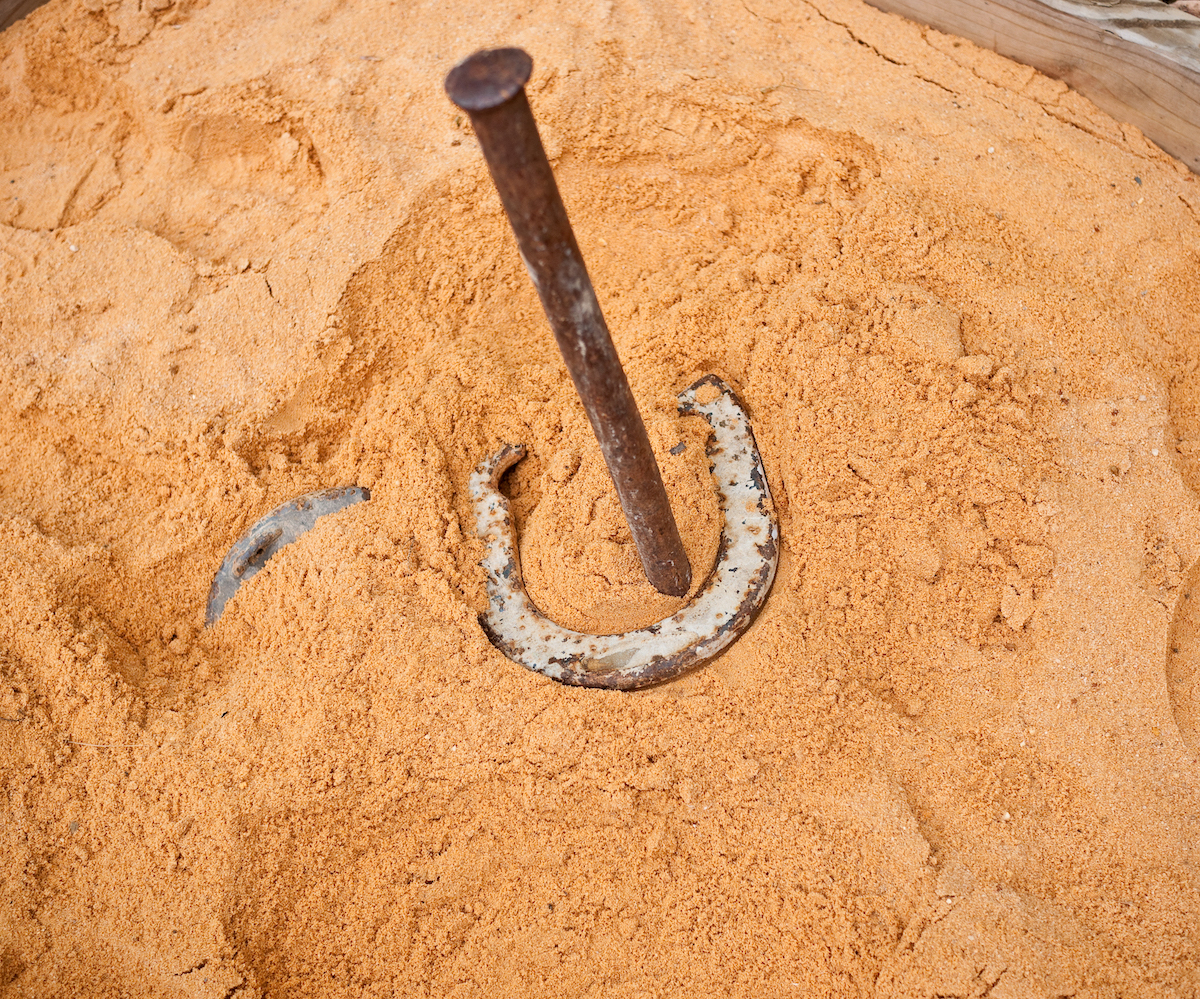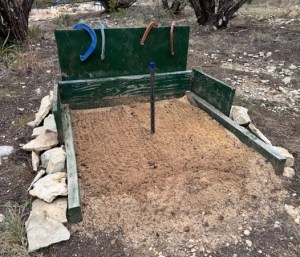

We may earn revenue from the products available on this page and participate in affiliate programs. Learn More ›
If you’re looking for ways to make your backyard more fun, why not build a horseshoe pit? There’s more than one way to approach this easy, inexpensive project, but the basics hold true no matter your approach. Read on for a full tutorial on how to build a horseshoe pit for entertainment for all ages, all season long.
Tools & Materials
Bobvila.com may earn a commission from purchases made through these links.
Step 1: Measure your space.
In a “regulation” pit, horseshoe pit dimensions require that stakes be exactly 40 feet apart. Those stakes should sit within a box that, while at least 31 by 43 inches, measures no larger than 36 by 72 inches. Common horseshoe pit dimensions for backyard play is 36 by 48 inches. You can make only one box, but horseshoes technically involves two boxes: one for stakes and one for pitching. So in all, a 48-by-6-foot rectangular area must be set aside for the game.
Note: Orient your pits in a north/south direction so that you can play comfortably, without your face in direct sunlight.
Step 2: Build the horseshoe boxes.
Assuming a pair of 36 by 48-inch horseshoe pits, you will need to cut eight pieces of lumber—that is, four pieces measuring 36 inches and four pieces measuring 48 inches. Using fasteners appropriate for the lumber you’ve chosen, assemble the wood pieces into two identical rectangular boxes.

Tried-and-True Advice

“My husband and I had plenty of leftover lumber from previous projects, so we just cobbled together what we had. Our horseshoe pits probably won’t win any design awards, but they were cheap and they work! We used leftover plywood to make a tall back and sides to keep wayward horseshoes contained. We spray painted everything to give the unmatched pieces a somewhat more cohesive look. Yes, the horseshoes have banged it up, but, you know… it has character.
Another thing to think about: You’ll want to run a rake through your pits before starting up a game, as neighborhood (and maybe your own) cats will almost certainly find the sand irresistible.”
—Gretchen Heber, Contributing Editor and Writer
Step 3: Set the boxes.
You can get away with simply setting your boxes on the ground, but it’s a better idea to dig trenches so that each box can sit flush to the ground. If you want, line the bottom of each horseshoe pit with landscape fabric to suppress weed growth and keep sand from sinking into the dirt.
Step 4: Set the stakes.
Set the stakes a minimum of 21 inches from the front of the box. Be sure the stakes are sticking up about 14 or 15 inches from the ground. Drive the stakes on a bias, so they lean toward the other pit at a slight angle of about 3 inches.
Step 5: Fill the pits with sand.
Fill both pits with sand. The type used for sandboxes is the best and most accessible in stores. Depending on the exact dimensions of the boxes you’ve built, expect to use five or six bags of sand to fill each pit.
If you want to invest more real estate and effort, you can upgrade your pit with backboards and pitching platforms. Most of the time, however, a no-frills design is more than enough to enthrall players of all ages and skill levels. If only “scoring a ringer” were as easy as it is to build a horseshoe pit!
